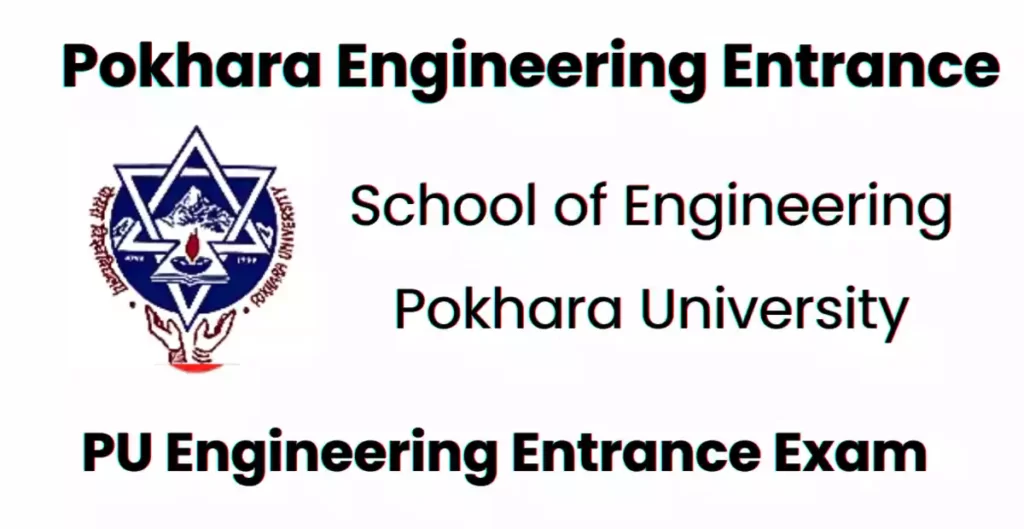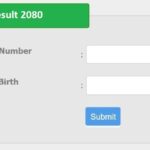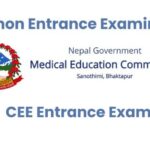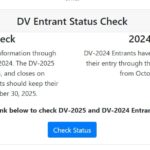Pokhara Engineering Entrance 2080: Pokhara Engineering Entrance is a highly competitive, national-level engineering entrance examination conducted by the School of Engineering, Pokhara University (PU) for admission to undergraduate engineering programs in Nepal. Aspiring engineering students from all over the country compete for limited seats, making Pokhara Engineering Entrance a challenging and pivotal milestone in their academic journey. In this article, we have provided complete information about the Pokhara Engineering Entrance 2080, including the answer key, result, eligibility, application form, cut-off, admission exam pattern, syllabus, and other details.
Pokhara Engineering Entrance 2080
| Name of Exam | Pokhara Engineering Entrance 2080 |
| Full-Form | Pokhara University Engineering Entrance Examination |
| Exam Organizing Body | School of Engineering, Pokhara University (PU) |
| Level of Exam | National |
| Type of Exam | Engineering entrance exam |
| Total Number of Questions | PUE engineering Colleges in Nepal |
| Exam Date | 30th Bhadra 2080 |
| Exam Duration | 2 Hours |
| Total Marks | 100 |
| Courses in which admission is through Pokhara | Various Engineering Programs |
| Colleges in which admission is through Pokhara | PUE ngineering Colleges in Nepal |
| Mode of Exam | Computer Based Test (CBT) |
| Official Website | entrance.pusoe.edu.np |
Pokhara Engineering Entrance 2080
Given below is the official exam schedule of the Pokhara Engineering Entrance Examination:
| Event | Dates |
| Notice Release Date | 18th August 2023 (1st Bhadra 2080) |
| Start date to submit the application form | 18th August 2023 |
| Fee submission on the last date | 12th September 2023 |
| Application Form Filling and Payment Deadline | 12th September 2023 |
| Pokhara Engineering Entrance Admit Card | 13th September 2023 (27th Bhadra 2080) |
| Pokhara PU CBT Entrance Exam Date | 30th Bhadra 2080 (16th September 2023) at 8:00 pm |
| Result Declaration | 1st week of Ashwin 2080 |
| Merit List Release Date | 1st week of Ashwin 2080 |
| Admission Process Date | Second week of Ashwin 2080 |

Eligibility Criteria for the Pokhara Engineering Entrance Exam 2080
To pursue a career in the diverse and critical field of engineering, aspiring students need to meet specific educational qualifications. The qualifications vary depending on the program they wish to enroll in, such as B.E Civil, Computer, and Software. Below are the required qualifications for various engineering programs:
- Completion of 10+2 Science/Intermediate Level Science/Diploma in Engineering or Equivalent qualification recognized by Pokhara University.
- Minimum aggregate of 45% or a second division / ‘C’ Grade (combined theory and practical) in each subject during grades 11 and 12
How to Apply for Pokhara Engineering Entrance 2080 soe.pu.edu.np
Before filling out the Pokhara Engineering Entrance application, applicants are required to make a payment as they need a voucher or transaction number during the application process. Once the payment is made, candidates can proceed with the Pokhara Engineering Entrance application 2080 by following these steps:
- Visit the official website: http://entrance.pusoe.edu.np.
- Register with your name, email, and password.
- Check your email for the confirmation link and confirmation code.
- Click on the confirmation link and enter the confirmation code to proceed with the online application.
- Use the provided login credentials to access the online application system.
- Fill in your personal and academic information.
- Select your desired program and subject area. Please note that you can only choose ONE subject area.
- Upload the required documents following the given document format guidelines (specified in the article).
- You can save and edit the information filled in earlier sections at any time. However, once you upload the documents, provide payment evidence, and submit the form, you won’t be able to make further changes.
- Ensure all information is accurate and review the declaration before submission.
- Make sure to submit the completed online application form before the specified deadline.
- Once your form is fully submitted, you will receive an email titled “Submission of Complete Application” confirming your successful application.
Pokhara Engineering Entrance 2080 Application Fee
Application processing fees can be paid through Digital Wallet and Bank. The application fee payable for different categories is:
| Category | Application Fee |
| For All Category | NPR 1600 |
Payment of Application Fee for Pokhara Engineering Entrance Exam via Bank and Digital Wallet
To pay the application fee for PU Engineering Entrance Exam 2080, you have the option to use eSewa, Khalti, or bank transfer.
Pokhara Engineering Entrance 2080 Eligibility Criteria
Candidates must check complete details related to Pokhara Engineering Entrance Eligibility Criteria from the below section:
Nationality: Nepalese Nationals and Foreign Nationals candidates are eligible to apply.
Educational Qualification: Candidates must have a 12th or equivalent certificate from a recognized board, with a C grade in the final in Physics, Chemistry, and Mathematics as core subjects.
Number of Attempts: There is no attempt limit for the Pokhara Engineering Entrance 2080 exam.
Foreign Nationals: Students who have been educated abroad and are planning to take admitted to engineering colleges in Nepal should have passed their 12th class with Physics, Chemistry, and Mathematics subjects.
PU Engineering Entrance Exam Admit Card 2080
Entrance Admit Card can be printed by the applicant two (2) days before the entrance examination date. The admit card contains details such as the PU Engineering Entrance exam date, exam center, reporting time, etc. Candidates should keep a printout of the Pokhara Univeristy admit card for further use. Candidates should carry their admit card on the day of the PU Engineering Entrance examination, as no candidates will be allowed to enter the examination hall. Candidates need to paste a photograph on the admit card, and one also needs to be carried along with the admit card.
Pokhara Engineering Entrance Exam Centers
The entrance exam is conducted at three different centers to accommodate candidates from various regions:
| Center 1 | School of Engineering, Pokhara-30, Kaski, Nepal |
| Center 2 | Kathmandu Nepal |
Students have the flexibility to choose any one exam center that suits their convenience during the application process. H Candidates are strictly prohibited from changing their chosen centers after the application deadline.
Pokhara Engineering Entrance 2080 Result
The Pokhara Engineering Entrance result will be announced through online mode. To get Pokhara Engineering Entrance Results, candidates are required to enter their login details like- application number and date of birth.
The result has been prepared according to the revised answer key released by the School of Engineering, Pokhara University. Pokhara does not prepare the entrance result category-wise. Candidates can take the printout of their Pokhara Engineering Entrance results after the declaration of it. The Pokhara result is considered by most of engineering colleges across the country for admission into bachelor programs in Nepal.
Pokhara Engineering Entrance Cut-Off 2080
The School of Engineering, Pokhara University (PU) will release the entrance cut-off for different categories, including General, Ethnic Minorities, Disadvantaged Communities, and Backward Areas. The cut-off marks have been made available in the form of a PDF file.
The Pokhara Engineering entrance cut-off will be declared simultaneously with the announcement of the examination results. The cut-off scores will be determined based on several factors, including the marks obtained in the Pokhara Engineering Entrance exam, the level of difficulty of the exam, the candidate’s rank, and the availability of seats in respective engineering colleges. Admissions to various engineering colleges will be granted to candidates according to their ranked scores in the Pokhara Engineering Entrance examination. Meeting the cut-off marks becomes a crucial factor in securing a seat in the desired engineering program.
Programs and Subject Areas Offered by Pokhara University
Pokhara University provides a diverse array of programs and subject areas, allowing students to explore and excel in various engineering, architecture, and technology disciplines. The following titles represent the subjects and programs offered:
- BE in Civil Engineering
- BE in Civil And Rural Engineering
- BE Electronic and Electrical Engineering
- BE in Computer Engineering
- BE in Software Engineering
Fee Structure Pokhara University School of Engineering College
| Program | Course Fee (NRs) |
|---|---|
| BE Civil And Rural | 6,23,000 |
| BE Computer BE Software | 5,87,200 |
| Security Deposit | 20,000 |
Pokhara Engineering Entrance 2080 Exam Pattern
The Pokhara Engineering Entrance Test (PEET) is a two-hour examination comprising 120 multiple-choice questions. The test is divided into three parts, each focusing on subjects PCM (Physics, Chemistry, and Mathematics). Each part consists of 40 multiple-choice questions, distributed evenly across the topics mentioned in the syllabi provided at the end of the document.
Here are the details about the Pokhara Exam pattern:
Mode: The exam will be held in offline mode in different centers inside the Pokhara valley computer method.
Number of Questions: There will be 100 questions from Mathematics, Physics, and Chemistry
Type of Questions: The question will include multiple-choice questions (MCQs).
Duration: The duration of the exam would be 2 hours.
Medium: The Pokhara question paper 2080 will be in the English language.
Section-wise exam pattern of Pokhara 2080 is given below
| Subjects | Questions |
|---|---|
| Physics | 25*1=25 |
| Chemistry | 15*1=15 |
| Mathematics | 40*1=40 |
| English | 20*1=20 |
Pokhara Engineering Entrance Syllabus 2080
The Pokhara Engineering Entrance Test (PEET) is a two-hour examination comprising 100 multiple-choice questions. The test is divided into four parts, each focusing on subjects PCM (Physics, Chemistry, and Mathematics) and English.
PU Entrance Syllabus Mathematics:[40×1=40]
- Set and Function
Set and relations, Functions and graphs, Algebraic, Trigonometric, Exponential,
Logarithmic and hyperbolic functions and their inverses.
- Algebra
Determinants, matrices, Inverse of a matrix, uses of complex numbers, Polynomial equations, sequence and series, Permutation and combination, Binomial theorem, exponential, Logarithmic series.
- Trigonometry
Trigonometric equations and general values, Inverse trigonometric functions, Principal values, Properties of triangles; Centroid, incentre, Orthocentre and circumcentre and their properties.
- Coordinate Geometry
Coordinates in a plane, Straight lines, Pair of lines, Circles, Conic sections: Parabola, ellipse and hyperbola. Standard equations and simple properties, Coordinates in space,
Plane and its equation.
- Calculus
Limit and continuity of functions, Derivatives and application of derivative – Tangent and normal, Rate of change, differentials dy and actual change Dy. Maxima and Minima of a function.; Antiderivatives (Integrations): rules of Integration, Standard Integrals, Definite
integral as the limit of a sum. Application to areas under a curve and area between two curves.
- Vectors
Vectors in space, addition of vectors. Linear combination of vectors, Linearly dependent and independent set of vectors, Scalar and vector product of two vectors, simple applications.
English Syllabus For PU Entrance Exam [20×1=20]
- Comprehension of reading passages on a variety of topics and style with special references to (i) General English and (ii) Technical English
- Grammar – Familiarity with the following aspects:
Parts of Speech, Basic Grammatical Patterns / Structures, Tense and Aspect, Conditional sentences, Verbals: infinitives, Participles and Gerunds, Direct and Indirect Speech, Active and Passive Voice, Kinds of Sentences, Transformation of sentences, Concord /Agreement,
Vocabulary, Use of Prepositions, Idiomatic expressions, Punctuation, Phonemes and phonetic symbols, Word Stress.
Physics Syllabus Engineering Exam[25×1=25]
- Mechanics
Dimensions, Equations of motion, Motion of a projectile. Laws of motion. Addition and subtraction of vectors. Relative velocity. Equilibrium of forces. Moments. Centre of mass. Centre of gravity. Solid friction. Work, power and energy. Conservation of energy. Angular speed. Centripetal force. Moment of inertia. Torque on a body. Angular momentum. Rotational kinetic energy. Laws of gravitation. Gravitational intensity, Gravitational potential. Velocity of escape. Simple harmonic motion. Energy of SHM. Hooke’s LawBreaking stress. Modules of elasticity. Energy stored in stretched wire. Surface tension
phenomenon. Surface energy. Capillarity. Fluid pressure. Pascal law of transmission of fluid pressure. Archimedes’ principle. Flotation Stokes’ law. Terminal velocity.
- Heat
Heat and temperature. Temperature scale. Measurement of heat energy. Specific heat capacity. Latent heat. Saturated and Unsaturated vapour. Relative humidity and dew point. First law of thermodynamics. Reversible isothermal and adiabatic changes. Gas laws.
Kinetic theory of gases. Second Law of thermodynamics. Carnot’s engine. Transfer of Heat. Conduction, convection and radiation. Expansion of solid, liquid and gas.
- Optics
Formation of images by plane and curved mirrors. Refraction of light through plane surfaces. Total internal reflection. Critical angle. Refraction through prism. Maximum and minimum deviation. Formation of images by lenses. Dispersion. Achromatic combination
of lenses visual angle. Angular magnification. Defect of vision. Telescope and microscope. Wave theory of light: introduction to Huygen’s principle and its application interference diffraction and polarization of light.
- Sound
Damped vibration. Forced oscillation. Resonance. Progressive waves, Principle of superposition. Velocity of sound in solid, liquid and gas: Laplace’s correction. Characteristics of Sound wave. Beat phenomenon. Doppler effect. Stationary waves. Waves in pipes. Waves in String.
- Electricity
Electric Charge. Gold leaf electroscope. Charging by induction Faraday’s ice pail experiment. Coulomb’s law. Permitivity. Electric field. Gauss’s law and its application. Electric potential. Capacitors. Ohm’s Law. Resistance–combination of resistances. emf. Kirchhoff’s law and its application. Heating effect of current. Thermoelectricity. Chemical
effect of current. Potentiometer. Wheatstone bridge. Galvanometer. Conversion of galvanometer into voltmeter and ammeter. Magnetic Field. Earth’s magnetism. Magnetic
Flux. Force on a current carrying conductor. Ampere’s law, Biot-Savart’s law and their applications. Solenoid. Electromagnetic induction.AC circuits.
- Atomic Physics and Electronics
Discharge electricity through gases. Cathode rays. Electronic mass and charge Bohr’s theory of atomic structure. Energy level. X-rays. Photoelectric effect Radioactivity. Nuclear – fission and fusion. Semiconductors. Junction Transistor.
Chemistry Engineering Entrance Syllabus [15×1=15]
- Language of Chemistry & Physical Chemistry
Symbol, formulate valency and chemical questions, Problems based on chemical equations (relation with weight and weight, and
weight and volume); Atomic Structure: Study of Cathode rays, and discovery of electrons, Rutheford’s X-ray scattering experiment and discovery of nucleus. Rutherford model of atom., Bohr model of atom, Elementary concept of quantum numbers, Electron configuration of the elements.
- Electronics Theory to Valency
Octet rule, Electrovalency, covalency and coordinate valency, General characteristics ionic and covalent compounds.
- Oxidation and Reduction
Classical definitions, Electronic interpretations of oxidation and
reduction, Balancing of redox equations by oxidation number method
- Periodic Classification of Elements
Mendeleev’s periodic law, anomalies of Mendeleev’s periodic table, Modern periodic Law, Periodic Properties viz. ionization potential,
electronegativity and atomic radii, and their variation in the periodic table; Equivalent Weight and Atomic Weight: Concept of equivalent weight, and its determination by hydrogen displacement method and oxide method, Concept of atomic weight, equivalent
weight and valency, determination of atomic weight using Dulong and Petit’s rule.
- Molecular Weight and Mole
Avogardo’s hypothesis and its deductions, Avogadro number
and concept of mole, Determination of molecular weight by Victor Meyer’s method; Electro–Chemistry; Electrolytes and non-electrolytes, strong electrolytes and weak electrolytes, Faraday’s laws of electrolysis, Solubility product principle and its applications
in qualitative analysis; Theories of Acids and Bases: Arrhenius theory, Bronsted and Lowry theory, Lewis theory; Volumetric Analysis Equivalent weights of acids, base and salts, Principles of acidimetry and alkalimetry, pH and pH scale
- Non-Metals
Water Hard water and soft water, Causes and removal of hardness of water; Nitrogen and its Compounds: Nitrogen cycle, Preparation of ammonia and nitric acid in the lab, and their
properties, Manufacture of ammonia and nitric acid, Sulphur and its Compound.
Allotropy of sulphur, Preparation of hydrogen sulphide, sulphure dioxide in the lab, and
their properties, Manufacture of sulphuric acid by contact process; Halogens and Their
Compound: Position of halogens in the periodic table, Preparation of chlorine and hydrogen
chloride in the lab, and their properties.
- Metals
Compounds of Metals: General methods of preparation and properties of oxides, hydroxides, chlorides, nitrates, sulphates and carbonates of metals; Sodium: Extraction of Sodium (Down’s process), Manufacture of caustic soda sodium carbonate; Copper: Extraction of copper from copper pyrite, Manufacture of Blue vitriol; Zinc: Extraction of
zinc from zinc blend, Galvanization; Iron: Extraction of cast iron from hematite, Cast iron, steel and wrought iron, Types of steel, Manufacture of steel
- Organic Chemistry
Sources and Purification of organic Compounds: Characteristics of organic compounds, Sources of organic compounds, Purification of organic compounds; Classification and nomenclature of organic Compounds: Functional group, homologous series, and isomerism
(structural only), Classification of organic compounds, Common names, and I.U.P.A.C. naming system
- Saturated and unsaturated Hydrocarbons & Aromatic compound
Preparation and properties of methane, Preparation and properties of ethylene and acetylene, Alkyl Halides: Preparation and properties of ethyl iodide; Aromatic Compounds: Structure of benzene, Preparation of benzene in the laboratory, Properties of benzene
FAQs on Pokhara Engineering Entrance Exam 2080
Will Pokhara Engineering Entrance be there in 2080?
Yes, Pokhara Engineering Entrance 2080 will be conducted by the School of Engineering, Pokhara University.
Is Pokhara Engineering Entrance conducted twice in 2080?
No, the Pokhara Engineering Entrance exam is conducted once a year; there are no multiple sessions in 2080.
When does Pokhara Engineering Entrance 2080 Admission start?
Pokhara Engineering Entrance 2080 admission is scheduled to commence in September 2080. Candidates can check the admission details for further information.
Is the syllabus reduced for Pokhara Engineering Entrance 2080?
No, the Pokhara Engineering Entrance 2080 syllabus remains unchanged; there are no reductions in the syllabus.
How can I check the Pokhara Engineering entrance result?
To check the Pokhara Engineering Entrance result 2080, candidates can access it through online mode only, and the website to check the Pokhara result 2080 is entrance.pusoe.edu.np
How to score 90+ marks in Pokhara Engineering Entrance 2080?
Scoring 90+ marks in Pokhara Engineering Entrance 2080 requires thorough exam preparations. Candidates should focus on comprehensive study techniques, practice the previous year’s question papers, and follow effective preparation tips to achieve higher marks in the examination.





